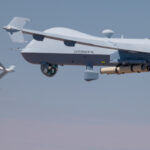
RTX [RTX] on Tuesday said third quarter earnings swung to a loss due to an issue with a commercial aircraft engine component that it disclosed in July when it reported second quarter results. Sales also tumbled due to the engine issue at the Pratt & Whitney segment, which stems from the discovery of microscopic contaminants in powder metal used to manufacture turbine discs in PW1100G-JM engines that could reduce disc life. The engines power Airbus A320neo commercial planes. The net…

 By
By 











